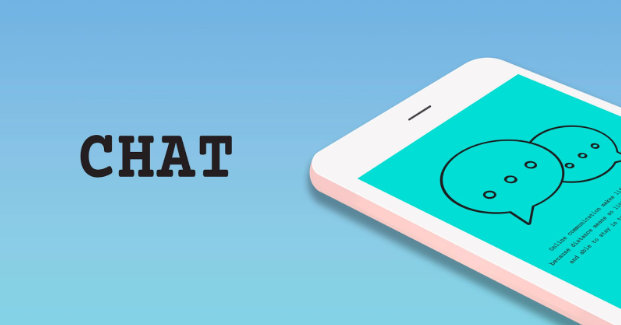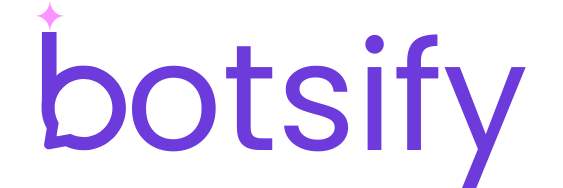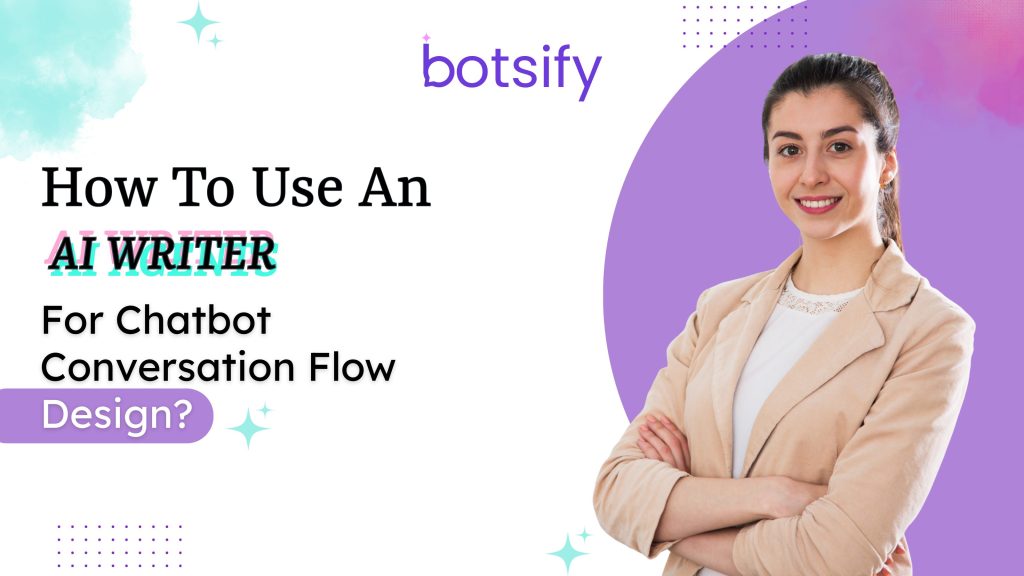
To use an AI writer for chatbot conversation flow design, define your chatbot’s purpose, and feed the AI writer with a set of base intents or scenarios. The AI writer then writes dialogue options that are varied and contextual, which jumpstart the conversational flow structure. Refine the chatbot’s voice, and once your flow is designed, copy dialogues and logic into the bot platforms.
Why Does Conversation Flow Matter in Chatbot Design?
A well-structured conversation flow matters in chatbot design, as it lets you achieve your goals more efficiently and reduces confusion and friction. According to a report by Zendesk, approximately 67% of customers believe that traits such as empathy, creativity, and friendliness lead to better outcomes. So, whether it’s customer support guiding a customer through an issue or a sales bot leading to a conversion, a conversation flow is the backbone of the customer experience.
The conversation flow serves as the roadmap for user interactions, determining whether a customer completes their journey successfully or abandons the conversation in frustration. Well-designed chatbots or AI Agents can significantly reduce customer service costs while maintaining high satisfaction rates.
Poorly designed chatbot workflows often result in higher abandonment rates, while optimized flows can substantially increase task completion rates.
Where do Developers Struggle?
The developers primarily struggle to translate abstract user intents into a structured and logical conversation tree. Using an AI Agentic platform can help streamline this process, as they often ponder how deep a flow should be, when to offer options to customers, and how to handle fallback responses. Additionally, they must write individual utterances, confirmation messages, follow-up prompts, and error handling, while ensuring consistency and tone at the same time.
Common development challenges include:
- Managing conversation complexity: As chatbots handle more use cases, chatbot conversation trees can become unwieldy with hundreds of potential paths. Developers must balance comprehensiveness with usability.
- Handling context switching: Users often change topics mid-conversation or return to previous subjects. Creating flows that gracefully handle these transitions requires sophisticated planning.
- Personality consistency: Maintaining the same brand voice across different chatbot conversation branches and scenarios becomes increasingly difficult as the bot grows.
- Error recovery: Designing fallback responses that don’t frustrate users while guiding them back to productive conversations requires both technical and creative skills.
- Cross-platform compatibility: Ensuring conversation flows work consistently across web, mobile, voice assistants, and messaging platforms adds another layer of complexity.
Things get trickier when handling multi-domain or multilingual bots. This is where AI writers can become valuable. They can emerge as intelligent collaborators that generate, test, and iterate potential paths much faster than a human.
Portable AI Agents In Seconds, Use Everywhere
Prompt, Test, and Deploy AI Agents Across Social Platforms and LLMs. Automate Everything.
How Can an AI Writer Assist in Designing Structured, Dynamic Conversation Flows?
AI writer assists in designing structured and dynamic conversation flows by automating the generation of dialogue variations, recognizing the intent, and maintaining tone consistency across branching paths. AI-assisted conversation design can significantly reduce development time while improving response quality.
The following is the process that the AI writer follows:
- Intent Analysis and Mapping: The developer feeds the AI writer with a set of base intents or user goals. For example, intents such as “check order status,” “book a doctor’s appointment,” or “reset password” can serve as anchor points for navigation. The AI analyzes these intents and suggests related sub-intents, creating a comprehensive intent hierarchy that might include variations like “track delivery,” “modify order,” or “cancel shipment” for an e-commerce bot.
- Dynamic Response Generation: The AI writer then proposes user inputs for each, followed by bot responses, follow-up questions, and edge cases. This jumpstarts the flow structure without starting from a blank canvas. Advanced AI systems can generate multiple response variations for a single intent, ensuring natural conversation flow even during repeated interactions.
- Brand Voice Alignment: Adjust the AI Agent’s personality and tone to align with your brand’s voice and values. You can provide a prompt like “rewrite this confirmation message in a professional but warm tone, no emojis.” The AI maintains consistency across numerous responses, something that would take human writers considerable time to accomplish.
- Contextual Adaptation: More importantly, AI is trained on conversation datasets to replicate the brevity, tone, and naturalness of human interaction. Based on this, AI suggests variations to avoid repetition, rewrites robotic responses into more engaging ones, and proposes follow-up actions based on user interactions.
For example, instead of repeating “You forgot your password?” the AI can write:
- “Let’s reset the password. Should I send you the reset link via email now?”
- “No problem, do you want me to send a password reset link?”
- “I can help you get back into your account. Would you prefer a reset link via email or text?”
This variety maintains engagement while serving the same functional purpose.

How Businesses are Benefitting from a Chatbot Conversational Flow?
Many businesses are benefiting from a chatbot conversational flow in terms of obtaining positive responses from their customers. According to Statista, around 49% of customers used chatbots to schedule appointments in 2024, while 46% of customers reported an issue. A better conversational flow leads to a stronger customer experience, increased satisfaction, and ultimately, business growth.
What are the Advantages of Using AI Writer In Conversation Design?
The advantages of using AI writers in conversation design are speed, consistency, and lower costs. According to a HubSpot survey, around 75% of respondents agreed that AI has helped them save time on manual tasks. Specifically for conversation design, AI can significantly reduce development time from weeks to days, with simple flows being created quickly.
Key Benefits Include:
- Rapid Prototyping: AI can generate complete conversation flows in minutes, allowing teams to test and iterate concepts quickly. This agility is crucial in fast-paced development environments where time-to-market matters.
- Scalability: Once trained on your brand voice and requirements, AI can generate consistent content for hundreds of intents without quality degradation. This scalability is particularly valuable for enterprise chatbots handling diverse use cases.
- A/B Testing Support: AI can quickly generate multiple versions of the same conversation flow, enabling comprehensive A/B testing to optimize user experience and conversion rates.
- Cross-Platform Adaptation: AI can adapt the same conversation logic for different platforms (web chat, voice assistants, messaging apps) while maintaining consistency in user experience.
Another benefit of using AI writers is tone consistency. AI writers can be trained to maintain brand voice across every interaction point. Regardless of the conversation tone (witty, formal, empathetic, or neutral), none of the AI-generated messages deviates from the brand’s tone. Multilingual chatbots can also handle tone mirroring and translation without requiring any human intervention, maintaining brand personality across multiple languages simultaneously.
However, keep in mind that AI writers don’t completely replace conversation designers. The AI writer merely acts as a personal assistant that speeds up your workflow, provides you with bandwidth to develop a creative strategy, and accelerates testing. In teams where designers, product owners, legal teams, developers, and designers collaborate, AI writers can become a shared assistant and provide example conversational flow scenarios that align with compliance requirements and business objectives.

Conclusion
If you’re building chatbots at scale, working across departments, or managing multiple intents, you must integrate an AI writer into your chatbot design workflow. AI writers have evolved significantly from just being content writers and can help you explore more ideas, move faster, and reduce friction in scripting, translation, and tone alignment. With the right approach, AI-assisted conversation design can substantially improve development efficiency while enhancing user satisfaction.
Irrespective of the type of bot you’re designing, AI provides meaningful structure and content support. The technology has matured to handle complex scenarios like multi-turn conversations, context switching, and emotional intelligence, making it an indispensable tool for modern chatbot development.
However, use an AI writer to create a first draft, and not the final voice. Read it aloud, make iterations, contextualize, and validate it with your team. Implement proper testing protocols, gather user feedback, and continuously refine your approach. This way, you can create a fast chatbot design process without compromising on quality.
Remember that successful chatbot conversation design is a collaborative effort between human creativity and AI efficiency. By leveraging the strengths of both, you can create conversational experiences that truly resonate with users and drive business results.
AI Agentic Platform For Building Portable AI Agents
Say Hello To Agentic AI That Connects With Your CRM And Even Other Agents

